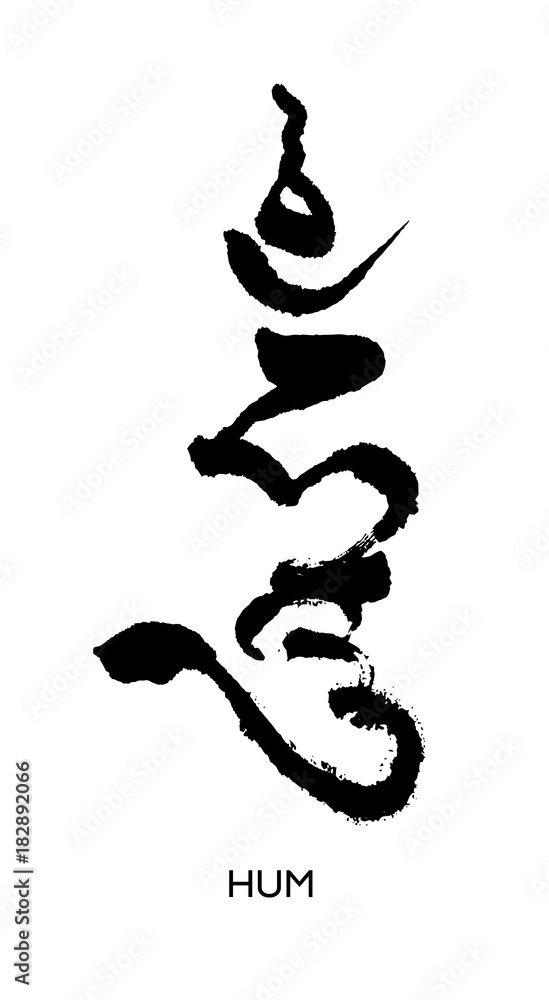A few months ago, my wife and I had a wonderful visit from an old college buddy and his wife. As they approached our front door, they spotted the Buddha figurine we have right outside (see above). At that point, my friend remarked, "I'm not a Buddhist because I don't believe that life is nothing but suffering..."
This is a common misunderstanding that many people have about the Buddha's teaching: that it is essentially pessimistic, because its first principle is that "life is suffering." So I felt that this was a good time to share my own understanding of the Four Noble Truths, which, according to tradition, were the first teaching the Buddha gave to his disciples after his enlightenment under the Bodhi Tree. These are usually translated as something like the following:
- Life is characterized by suffering (Dukkha);
- Suffering is rooted in craving;
- Craving can be abandoned (through awakening or enlightenment);
- The path to awakening is eightfold:
- Right Understanding;
- Right Intention (or aspiration);
- Right Speech;
- Right Action;
- Right Livelihood
- Right Effort;
- Right Mindfulness;
- Right Concentration (Samadhi)
While the commentary on this teaching is immense, and I do not pretend to grasp these teachings in any depth, I nevertheless like to review these core teachings to enhance my own understanding of them, and ideally to help others (including my friend) to gain a clearer understanding of what the Buddha was teaching us.
Let's start with the problem of translation. Normally a single English word will not do justice to the range of connotations in the original language, so it is best to provide several possibilities for each. The key terms in the original Sanskrit/ Pali languages were as follows:
Dukkha (pain, suffering, or dissatisfaction or frustration)
Samudaya (arising)
Nirodha (ending)
Marga (path)
Dukkha has a broad range of connotations. It does not simply refer to physical pain nor extreme mental anguish, as many assume. Rather, it refers more broadly to dissatisfaction, and it arises from craving, or wanting things to be other than they are. This is something we share with all other animate beings--at least those of sufficient complexity to have emotional lives. Quite simply, the natural state of being alive entails wanting, and seeking out, the things we don't currently have, whether it is food, water, sex, comfort, safety, or in our own case, relief from boredom through entertainment or consumerism.
More fundamentally, once we attain self-awareness through human language, we have more primordial kinds of existential anguish or frustration. We all wish we could live forever, but we all die; we all wish we could enjoy perfect health, but we all get sick, sooner or later; and we all enjoy and wish to keep the people and things we have in our lives--our spouses, families, homes, possessions, and so forth--yet sooner or later, we lose them all. So the deepest root cause of Dukkha is simply impermanence--or in physics, the Second Law of Thermodynamics (entropy). As George Harrison sings, "All things must pass..."
So Dukkha of all kinds is directly linked to Samudaya the root cause that gives rise to it: craving or wishing things were other than they are. But is this our fate? Most of us already share this basic pessimism, of which the Buddha is often accused; this is why many recoil from these teachings, like my friend. Who, after all, wants to be reminded, again and again, that "life's a bitch, and then you die."
But the Buddha did not stop there. Having succinctly diagnosed our shared existential plight, he goes on to offer a promise, and then a way to get there.
The promise, of course, is the Third Noble Truth: It is possible to abandon, or rise above, the perpetual craving that causes our grief and suffering, both trivial and profound. We don't have to remain in a state of frustration, of wanting what we can't have, or wishing things were other than they are. But how do we escape from this existential plight into which we, like all other sentient beings, were born?
The recipe or "path" he gives us for dealing with this innately dissatisfied condition of life is quite simple, but far-reaching in its implications. Let's review the Eightfold Path briefly.
Right Understanding (often translated, incorrectly in my eyes, as "right views"). This begins recursively by referring back to the first three truths: that we are born into dissatisfaction because life and all of its conditions are impermanent; that our suffering is rooted in craving what we don't have; and that we have the potential to let go of this craving, and hence of our suffering. At a deeper level Right Understanding is the insight reflected in the Three Dharma Seals--which Thich Nhat Hanh succinctly renders as Impermanence, Interbeing and Oneness (Nirvana).
The first--Impermanence--is already the cause of the problem set forth in the first two of the Four Noble Truths: the fact that we crave things we either do not have yet, or will lose eventually--our health, our possessions, those we love, and our very lives. The second, Interbeing, refers to the deeper truth often translated as "nonself"--that is, that we are all deeply interconnected, and that without everyone and everything else in the universe, there would be no one and nothing in the universe. More specifically, in Gaian terms, without sunlight, oxygenated air, fresh water, topsoil, minerals, photosynthetic biomass, and the hard work and sexual lives of all our ancestors, and the hard work and training of all who grow our food, build our houses, and provide our possessions, none of us would be here. As Thich Nhat Hanh puts it concisely, "to be is to inter-be." And grasping this insight--and living it--is the key to the ultimate goal of Nirvana, which does not denote "nonexistence" or "heaven" as often misunderstood, but rather translates literally as "extinction"--that is, extinction of the delusion of separateness we carry around with ourselves, and the emerging awareness of our Oneness with all others, all life, and all the universe.
But that "Right Understanding" is only the beginning of the path to awakening. It is followed by realizing this understanding through ethical behavior, beginning with Right Aspiration--setting the intention to awaken to our true nature of interbeing, and then acting accordingly (Right Speech, Right Action, Right Livelihood, and Right Effort).
The last two steps of the path refer to the fruition of these efforts: Right Mindfulness and Right Concentration (Samadhi) which in turn cycle back in to, and reinforce, Right Understanding, Right Aspiration, and the rest, so that the Eightfold Path is less of a ladder than a spiral; with enlightenment not a "place" you reach and rest, but rather an asymptotic goal--one for which you continually strive without ever deluding yourself into thinking "I've made it." (If you think you're enlightened, you're not.)
So Right Effort is ultimately what the Buddhist path boils down to: breathing, observing, letting go, (abiding in equanimity); being well, doing good work, keeping in touch, (abiding in equanimity); learning, teaching, healing, and creating (and, as always, abiding in equanimity, no matter what happens).
May we all tread this path, in accordance with our own understanding.
.JPG)









